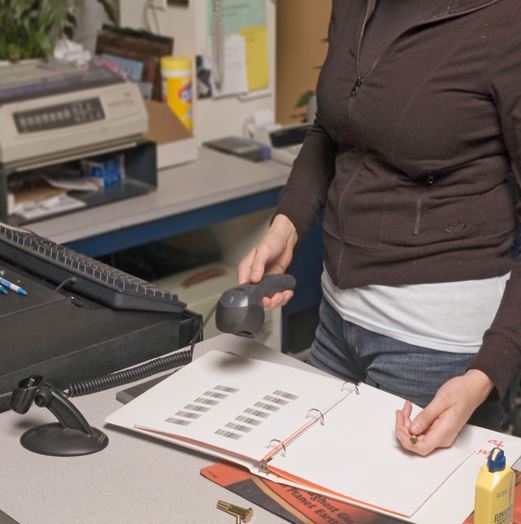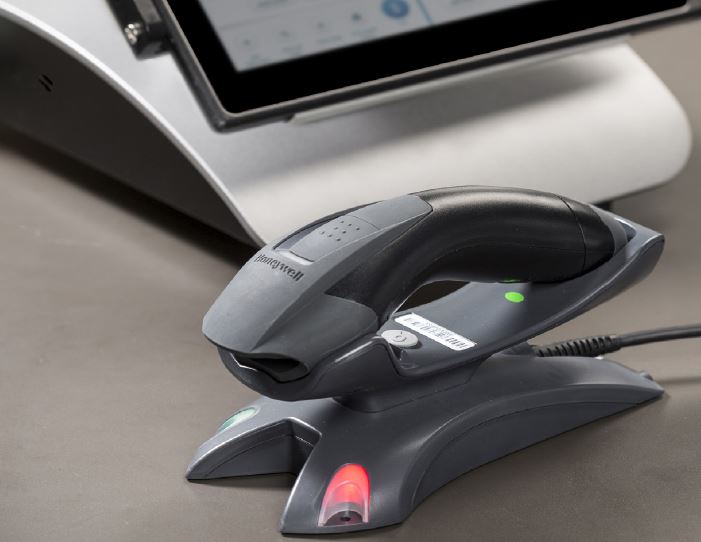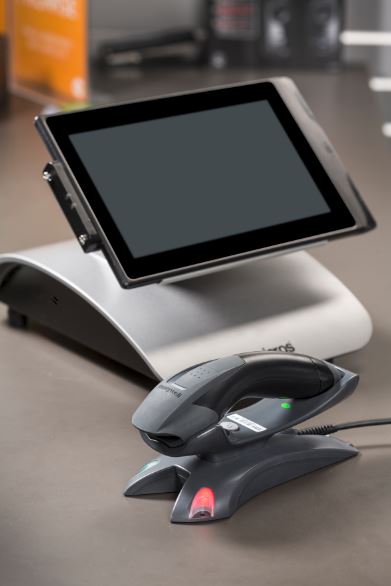No Cords, No Batteries: Bar Code Scanning Goes Green
 By: Julie Onephandara, Scanning Product Marketing Manager, Honeywell Sensing and Productivity Solutions
By: Julie Onephandara, Scanning Product Marketing Manager, Honeywell Sensing and Productivity Solutions
The first time you hear that a bar code scanner can be both cordless and battery-free, your reaction might well be “Wait – what? What does that even mean?” It sounds like an oxymoron: No cords, no batteries. How does it get power?
If your next thought is a vision of finicky solar cells or tedious hand cranks, you’re in for a pleasant surprise:
The answer comes from advances in an alternative energy storage technology called supercapacitors, sometimes referred to as ultracapacitors.
Supercapacitors are safe, simple, reliable, and environmentally friendly. They can also reduce costs and complexity in operations that only need handheld scanners for moments at a time, such as retail point-of-sale environments.
How “Green Scanning” Works
Unlike batteries, which rely on chemical reactions, supercapacitors store energy electrostatically on two plates within an electrolyte. When voltage is supplied, the plates become electrodes, attracting negative or positive ions respectively. Capacity depends on plate size; a typical Bluetooth® scanner can operate on a supercapacitor smaller and lighter than a lithium-ion battery.
Supercapacitors also have short charge cycles. A scanner holds a charge for just a few minutes, but this is offset by extremely rapid recharging. For example, current green scanners can read 100 barcodes per charge and fully recharge in 35 seconds.
And supercapacitors have a thousand times more charge cycles than batteries: half-a-million charge cycles compared to the typical 500 cycles for lithium-ion batteries.

Business and Environmental Benefits
The absence of chemical reactions is what makes supercapacitors a green technology. Unique environmental and cost-saving benefits include:
--No special handling for shipment or recycling;
--No hours-long downtime for recharging;
--No need to purchase and store replacements;
--No labor time for battery replacement, no devices out of service, and no spare pool;
--An opportunity to showcase your commitment to environmental sustainability.
Moreover, scanners powered by supercapacitors feature the same scanning performance as any other scanner, the same wireless range, the same plug-and-play compatibility, and the same or better ergonomics (since the power source is smaller and lighter).
Is it Right for Your Business?
Green scanning is well suited to operations such as retail point of sale where the scanner rests in a charging cradle and is picked up periodically for a few scans at a time. Similar uses include libraries, check-in/check-out processes, and file/document tracking.
In such scenarios, scanners typically need battery replacement every 500 days – twice for scanners with a three-year lifecycle. Conversely, a comparable supercapacitor lasts eight years, far outlasting the scanner.
Eliminating replacement batteries reduces ownership costs by $80–$120 per scanner, on average – and that doesn’t account for replacement and disposal labor, productivity loss from battery failure, or the costs of spares.
Finally, supercapacitor technology offers businesses the opportunity to reduce the impact of hazardous technology waste in a manner highly visible – and valuable – to customers.
To learn more about green scanning technology, download this free white paper.
Other Articles:
Follow Us On Twitter - https://www.twitter.com/TheBarcodeNews
